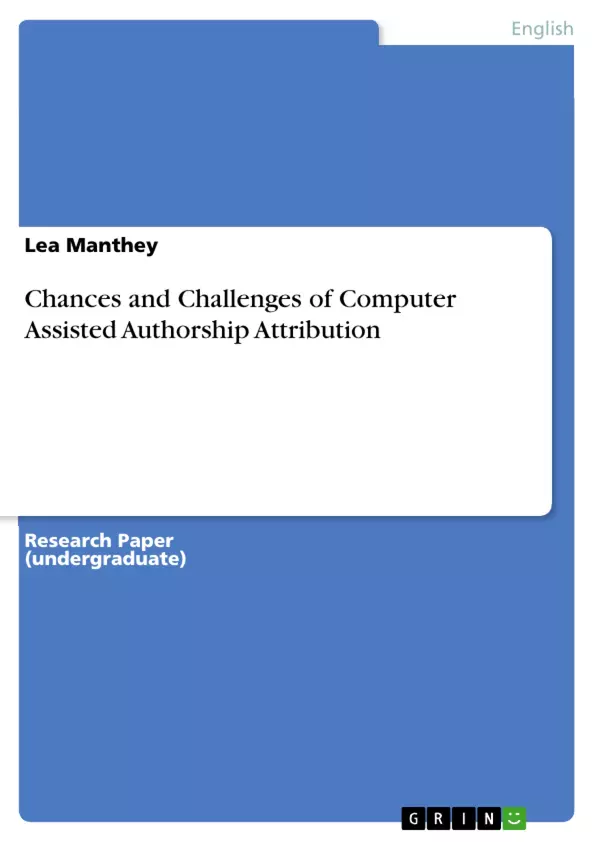Is a certain piece written by Shakespeare or is it not? This question and others,regarding different authors and a plethora of anonymous works, has been askedmultiple times but still remains unacknowledged for many cases.This paper presents a comparison of traditional and computer assisted approaches of Authorship Attribution Studies.
The main part of this work consists of chapter four, where the chances of computer assisted authorship attribution will be confronted with it's general challenges, after the most recent techniques are explained. Chapter 4.4 draws a line to forensic linguistics, another specific field of application, where authorship attribution becomes increasingly important.
The last chapter summarizes the key points of the paper and outlines the most important findings, concerning (computer assisted) authorship attribution in general and it's impact on literary history in particular.
Inhaltsverzeichnis (Table of Contents)
- Introduction
- Defining 'Author', 'Authorship' and 'Authorship Marker'
- Authorship Attribution
- Traditional Approach
- Computer Assisted Approach
- Computer Assisted Authorship Attribution
- Quantitative Techniques
- Challenges of CAAA
- Chances of CAAA
- Further Scope of Application
- Conclusion
Zielsetzung und Themenschwerpunkte (Objectives and Key Themes)
This paper aims to discuss the chances and challenges of computer-assisted authorship attribution (CAAA) in the field of literary studies. It examines the potential of this approach to provide a faster and more reliable method for determining authorship compared to traditional methods.
- Defining 'Author', 'Authorship', and 'Authorship Markers'
- Comparing Traditional and Computer-Assisted Authorship Attribution Methods
- Exploring the Potential and Limitations of CAAA
- Examining the Applicability of CAAA in Forensic Linguistics
Zusammenfassung der Kapitel (Chapter Summaries)
Chapter 1 introduces the problem of authorship attribution and its significance in literary studies, highlighting the limitations of traditional methods and the potential of computer-assisted approaches.
Chapter 2 provides a comprehensive definition of 'Author', 'Authorship', and 'Authorship Marker', establishing a foundation for understanding the underlying concepts of authorship attribution studies.
Chapter 3 presents a comparative overview of traditional and computer-assisted approaches to authorship attribution, highlighting the strengths and weaknesses of each method.
Chapter 4 delves into the core of computer-assisted authorship attribution, discussing its quantitative techniques, the challenges it faces, and the potential it offers for future research and applications.
Schlüsselwörter (Keywords)
Authorship Attribution, Computer-Assisted Authorship Attribution (CAAA), Traditional Authorship Studies, Quantitative Techniques, Forensic Linguistics, Authorship Markers, Linguistic Analysis, Literary History
- Quote paper
- Lea Manthey (Author), 2014, Chances and Challenges of Computer Assisted Authorship Attribution, Munich, GRIN Verlag, https://www.grin.com/document/287861



